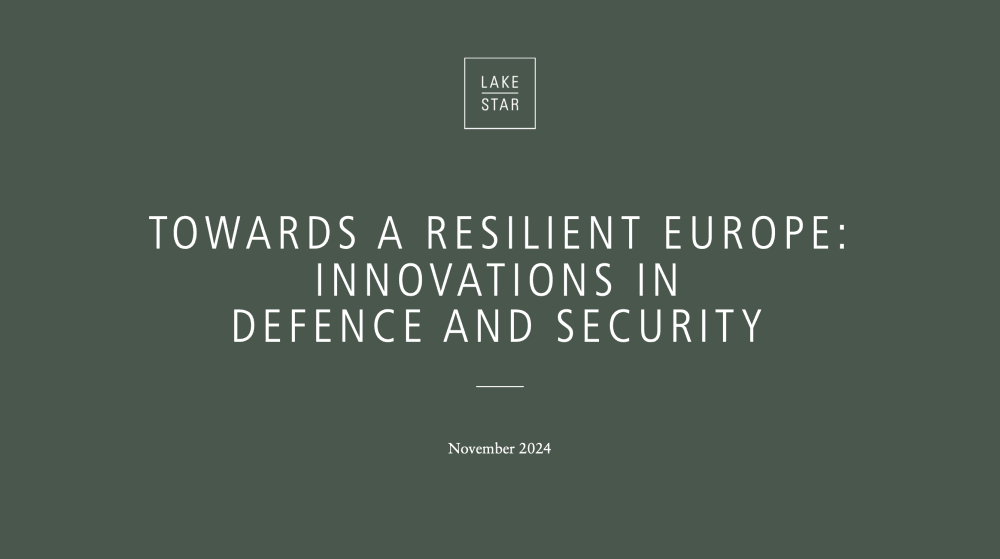Insights|
Best Practices in Public Relations
The first step companies need to take in thinking about the right PR strategy is to ask themselves what they want to achieve. The search for this often starts when raising Series A funding, which can raise a variety of objectives that will help entrepreneurs to build their businesses in appropriate ways. Obviously, many will want to attract new funding, in some cases from international investors.
Also important may be a desire to attract new customers, especially if the Seed funding round has established a product or service that will be of interest to them. Depending on the business, the entrepreneurs might wish to find other businesses that could become part of their supply chains. And at some point, growing businesses are likely to find that they want to hire talent to fill gaps in their workforces. Last but not least, potential investors might find the new enterprise sufficiently interesting to consider participating as Limited Partners (LPs) in subsequent funding rounds.
This initial stage of PR is a milestone in the growth of a company and thus companies should be well-prepared in order to give positive signals to the market. Many companies at the Series A funding stage will not have an in-house PR professional, but Lakestar can assist in producing a press release and distributing it through our networks and agencies. By the time that Series B funding is being raised, there is often an in-house PR person that we will support and work with as needed. For example, we can help amplify their messages by adding social media to their networks and putting information on our channels, e.g. our website, Lakestar.com.
In some cases, entrepreneurs will be tempted to start their PR as early as the Seed round, but often not enough has yet been achieved to capture press attention. We usually advise waiting until there is something relevant to announce that will interest the media, with a message which will get through to a broader audience. Indeed, it is often better to wait until there is a product that is ready to be sold to customers, which is more likely to attract press coverage.
There is only one thing in the world worse than being talked about. And that is not being talked about
If a CEO or Chief Marketing Officer approaches us for PR help, the first thing I always ask is what is their objective. Then I ask which market and what industry, and depending on their answers, we can choose the right media strategy. Entrepreneurs often wish to target high profile publications such as the Financial Times, TechCrunch or Handelsblatt, but those publications may not be interested in writing about specialist products: if it is a logistics platform, for example, the logistics trade B2B press may be more interested. Choosing the right specialist outlet usually needs some research, which we can help with if required.
Geography is also important: if a portfolio company wants to grow into the US, it should think about aiming for the Wall Street Journal or the New York Times; if it is a tech company, the US trade press may be interested. If the company is a German based start-up with no international angle, TechCrunch in the UK may be less interested, but partnering with German event platforms such as DLD or NOAH might achieve better results.
To sum up, there are the three steps we take in launching a PR campaign:
- First, we prepare the press release and validate and align it with our joint investors. If we are the lead investor, we will lead the process; if there is a larger lead investor, they will typically lead the process and we will add anything we see as important.
- In a second step, we place it through relevant PR agencies – including the portfolio company’s agency if they have one.
- Finally, we amplify it through social media such as LinkedIn, Twitter and our website, Lakestar.com.

For example, Lakestar recently led the B-Series investment of USD20 million in a hotel management business called Impala, and we issued a press release. Initially we sent it to TechCrunch, which typically prefer a little time to interview the principals and analyse the product. Shortly after, we sent the release to other media outlets and published it on LinkedIn which resulted in numerous articles, followed by posting it on Lakestar.com.
Another example was the work we did to publicise the 2019 Series C fundraising for Sennder, which had already created Europe’s leading digital road freight forwarder in just two years. We led the round, issued the press release to announce the financing round and thereby generated a successful media noise with more than 50 articles. In that way, we could extend the news in the media and attracted lots of follow ups from a media and business perspective.
We were also involved in the second funding round for Scoutbee which has created a search platform that helps companies find suppliers (profiled in this issue of Briefing). We were not the lead in the round which was announced by the leading investor, but we publicised our involvement in a release issued at a subsequent DLD technology conference in Germany with interviews of the founders which made a very positive impact on target companies.
Some portfolio companies suggest issuing PR announcements at a very early stage which they believe will make a bigger impact on the market. But there are so many deals announced each day that cutting through the clutter requires a good story to make an impact – and it is important not to oversell the story which can damage the company’s reputation. On the other hand, some portfolio companies are too shy about what they will say and need help in finding the right story to attract the attention of their target audience.
Who fronts up a PR announcement is an important decision: the CEO of a deep tech company may not be the right person if they tend to speak about technical products in too much detail. It should be someone who can explain the uniqueness of the company in a way that makes it attractive for the media to report. So it is very useful to identify at an early stage a spokesperson who can deal clearly with requests for more information and speak well in front on cameras.
Finally, business announcements should be made at the beginning of the week and early in the day. If they are issued late in the day, they may lose coverage to companies which have issued their press releases first thing. They should also be scheduled for earlier in the week: releases issued on Fridays can be overlooked in the weekend press or be bumped out by breaking weekend news.
To sum up, my three priorities when issuing press releases are:
- Don’t issue them too early in the product cycle or too late – do it when you have a good story to tell.
- Choose the media to target in terms of both geography and industry – focus on the markets where you want to make an impact and on the media that will be most interested in your product.
- Be prepared to handle queries after media announcements – pick the best spokesperson, and prepare answers to the questions they may be asked.
How we help increase portfolio companies’ visibility
PR Announcement
- Aligned PR announcements, both for lead and non-lead investments
- Collaboration with portfolio companies’ PR Agencies
Media strategy
- Choose list of media outlets relevant for max visibility
- Provide exclusivity to 1–2 outlets for in-depth interviews e.g. TechCrunch, Handelsblatt
- Combine with event platforms, where possible. DLD, NOAH etc
Amplify message
- Post on lakestar.com
- Post on LinkedIn









